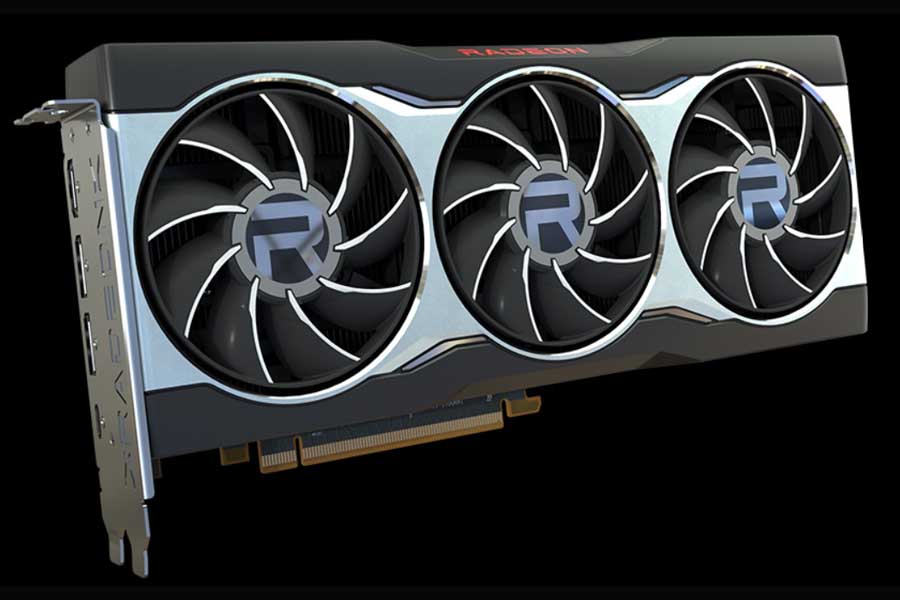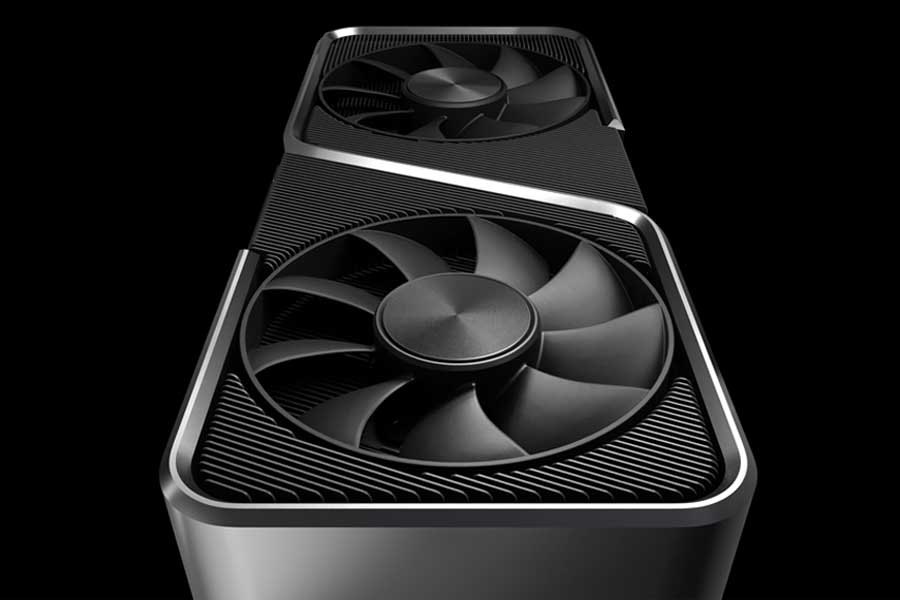
For the longest time, NVIDIA was the only choice for gamers for the top-end graphics cards as its premium offerings hardly faced any competition. However, this time around, buyers now have a choice, thanks to the introduction of the RDNA 2 based graphics card by AMD. In this post, we are going to compare AMD Radeon RX 6800 against NVIDIA’s GeForce RTX 3070 and help you decide to choose one between the two.
AMD Radeon RX 6800 vs GeForce RTX 3070
Architecture
Let’s first talk about the architecture and raw specs of the two graphics cards in this comparison. The RTX 3700 is based on NVIDIA’s third-generation Ampere architecture whereas the Radeon RX 6800 is based on AMD’s RDNA 2 architecture. While the former is based on Samsung’s 8nm custom process, the latter is based on a smaller 7nm process. Talking about the interface, both are PCIe 4.0 ready.
Moving on, RTX 3070 features 5,880 CUDA cores along with a base clock of 1,500MHz. Similarly, the boost clock speed can reach up to 1,725MHz. For Ray Tracing, it has 49 Gen 2 RT cores. On the other hand, RX 6800 features 3,840 Stream Processors with a game clock (AMD’s fancy name for base clock) of 1,815MHz, while its boost clock speed can reach up to 2,105MHz. For the first time, AMD has included support for Ray Tracing in its graphics card.

As far as memory goes, RX 6800 has a maximum size of 16GB of GDDR6 VRAM, while it’s half as much in the RTX 3070 Founder’s Edition. Both cards have a 256-bit memory interface width although the 3070 lags behind in terms of memory bandwidth (448GB/s < 512GB/s). The Radeon RX 6800 also has something called “Infinity Cache” of 128MB. It’s an on-die Zen L3 cache which “minimizes DRAM bottleneck, latencies, and power consumption”, thus resulting in almost twice bandwidth at low power.
Extra Features
When it comes to extra features, AMD still has some catching up to do. With the RDNA 2, the company has included support for the Ray Tracing. However, being a first-gen product, we can not expect much from the Ray Accelerators compared to NVIDIA’s RT cores. NVIDIA also has DLSS (Deep Learning Super Samling) technology that allows the graphics card to upscale low resolution renders to higher resolution using tensor cores. AMD is also working on a similar feature called Super Resolution, although there is no news about when it will be available.
AMD also announced Smart Access Memory that allows the Ryzen 5000 series CPU to utilize RDNA 2 based GPU’s whole memory instead of small blocks of them. It has already been confirmed that the Smart Access Memory technology makes use of support for resizable Base Address Register. While it’s only available in AMD’s card, for now, NVIDIA is coming up with a version of its own.
On the other hand, NVIDIA offers a lot more than just raw power with its latest graphics card. For instance, it has partnered with select games for a low latency mode. Similarly, they will also support latency evaluation tool with upcoming 360Hz NVIDIA G-Sync Esport displays. For streamers, there is NVIDIA Broadcast that supports audio noise removal, virtual background effect, and webcam auto frame.
Performance
Talking about the actual performance, recent third-party benchmark results have shown that the AMD Radeon RX 6800 outperforms the NVIDIA RTX 3070. The difference is even more evident in 4K gaming because of double VRAM in the RX 6800. The Smart Memory Access also uplifts the performance to some extent however the improvement is subject to the game you play.

Still, this is without Ray Tracing turned on. In the game that supports Ray Tracing, the RX 6800 performs miserably and the RTX 3070 has the upper hand. Like I mentioned earlier, unfortunately, AMD has no technology that is equivalent to NVIDIA’s DLSS for now.
Price
AMD Radeon RX 6800 is priced at $579, which is only $70 cheaper than the RX 6800 XT. On the other hand, the Founder’s Edition of NVIDIA GeForce RTX 3070 has a cheaper price tag of just $499.
RX 6800 vs RTX 3070: Conclusion
If you are more concerned about raw performance but can’t afford the Radeon RX 6800 XT, the standard 6800 could be a decent option. It offers better raw performance compared to the NVIDIA RTX 3070 for an additional $80.
On the other hand, if Ray Tracing and DLSS are of high significance to your use case, the RTX 3070 is an obvious choice between the two—considering both performance and price. Furthermore, if you are into live streaming, The 3070 makes more sense because of the NVIDIA Broadcast which is absent in the AMD counterpart.
- Watch our review of the MSI GE66 Raider gaming laptop.







![Best Gaming Laptops in Nepal Under Rs. 250,000 (रु 2.5 Lakhs) [2025] Best Gaming Laptops Under 2.5 lakhs in Nepal [Feb 2025 Update]](https://cdn.gadgetbytenepal.com/wp-content/uploads/2025/02/Best-Gaming-Laptops-Under-2.5-lakhs-in-Nepal-Feb-2025-Update.jpg)
![Best Gaming Laptops in Nepal Under Rs. 120,000 (रु 1.2 Lakhs) [2025] Best Budget Gaming Laptops Under Rs 120000 in Nepal 2025 Update](https://cdn.gadgetbytenepal.com/wp-content/uploads/2025/05/Best-Budget-Gaming-Laptops-Under-Rs-120000-in-Nepal-2024-Update.jpg)
![Best Laptops Under Rs. 80,000 in Nepal [2025] Best Laptops Under 80,000 in Nepal March 2025 Update](https://cdn.gadgetbytenepal.com/wp-content/uploads/2025/03/Best-Laptops-Under-80000-in-Nepal-March-2025-Update.jpg)
![Best Gaming Laptops in Nepal Under Rs. 200,000 (रु 2 Lakhs) [2025] Best gaming lapotp under 2 lakhs Nepal Feb 2025](https://cdn.gadgetbytenepal.com/wp-content/uploads/2025/01/Best-Gaming-Laptops-Under-2-Lakh-Nepal-Feb-2025-Update.jpg)

![Best Mobile Phones Under Rs. 15,000 in Nepal [Updated 2025] Best Phones Under 15000 in Nepal 2024 Budget Smartphones Cheap Affordable](https://cdn.gadgetbytenepal.com/wp-content/uploads/2024/03/Best-Phones-Under-15000-in-Nepal-2024.jpg)
![Best Mobile Phones Under Rs. 20,000 in Nepal [Updated] Best Mobile Phones Under NPR 20000 in Nepal 2023 Updated Samsung Xiaomi Redmi POCO Realme Narzo Benco](https://cdn.gadgetbytenepal.com/wp-content/uploads/2024/01/Best-Phones-Under-20000-in-Nepal-2024.jpg)
![Best Mobile Phones Under Rs. 30,000 in Nepal [Updated 2025] Best Phones Under 30000 in Nepal](https://cdn.gadgetbytenepal.com/wp-content/uploads/2025/01/Best-Phones-Under-30000-in-Nepal.jpg)
![Best Mobile Phones Under Rs. 40,000 in Nepal [Updated 2025] Best Phones Under 40000 in Nepal 2024 Smartphones Mobile Midrange](https://cdn.gadgetbytenepal.com/wp-content/uploads/2024/02/Best-Phones-Under-40000-in-Nepal-2024.jpg)
![Best Mobile Phones Under Rs. 50,000 in Nepal [Updated 2025] Best Phones Under 50000 in Nepal](https://cdn.gadgetbytenepal.com/wp-content/uploads/2025/01/Best-Phones-Under-50000-in-Nepal.jpg)
![Best Flagship Smartphones To Buy In Nepal [Updated] Best flagship phone 2025](https://cdn.gadgetbytenepal.com/wp-content/uploads/2024/07/Best-Flagship-Phones-who-is-it-ft-1.jpg)